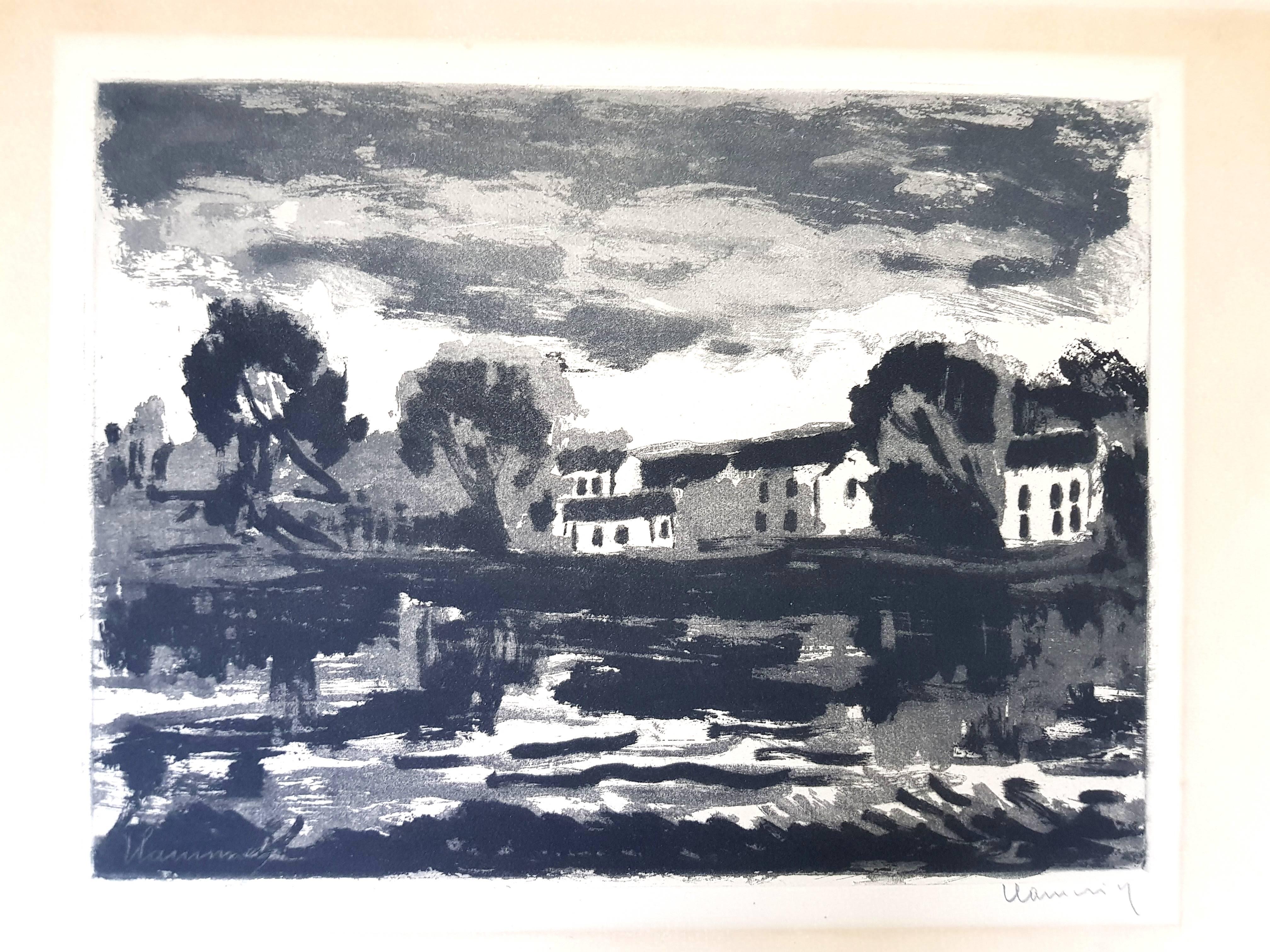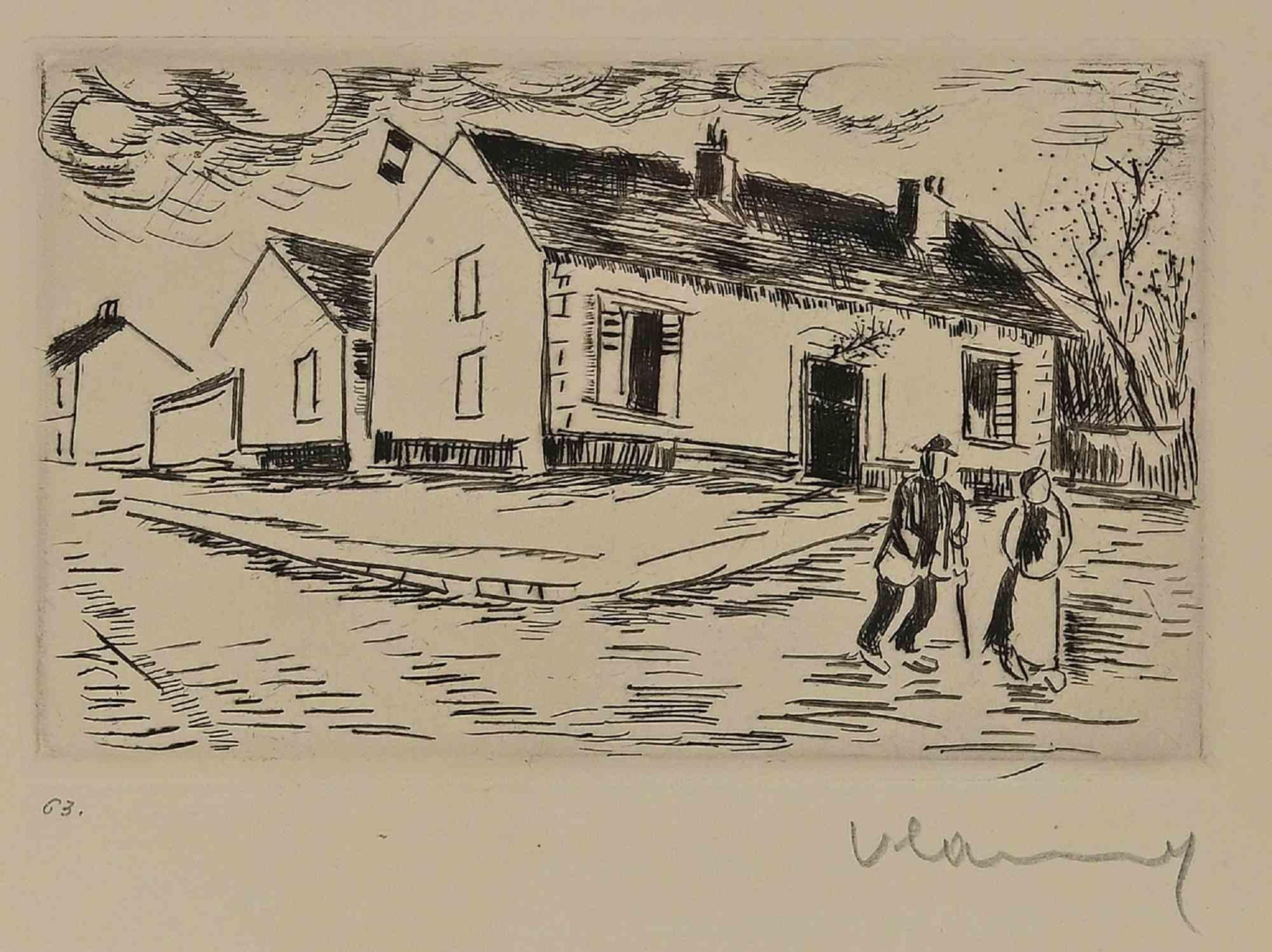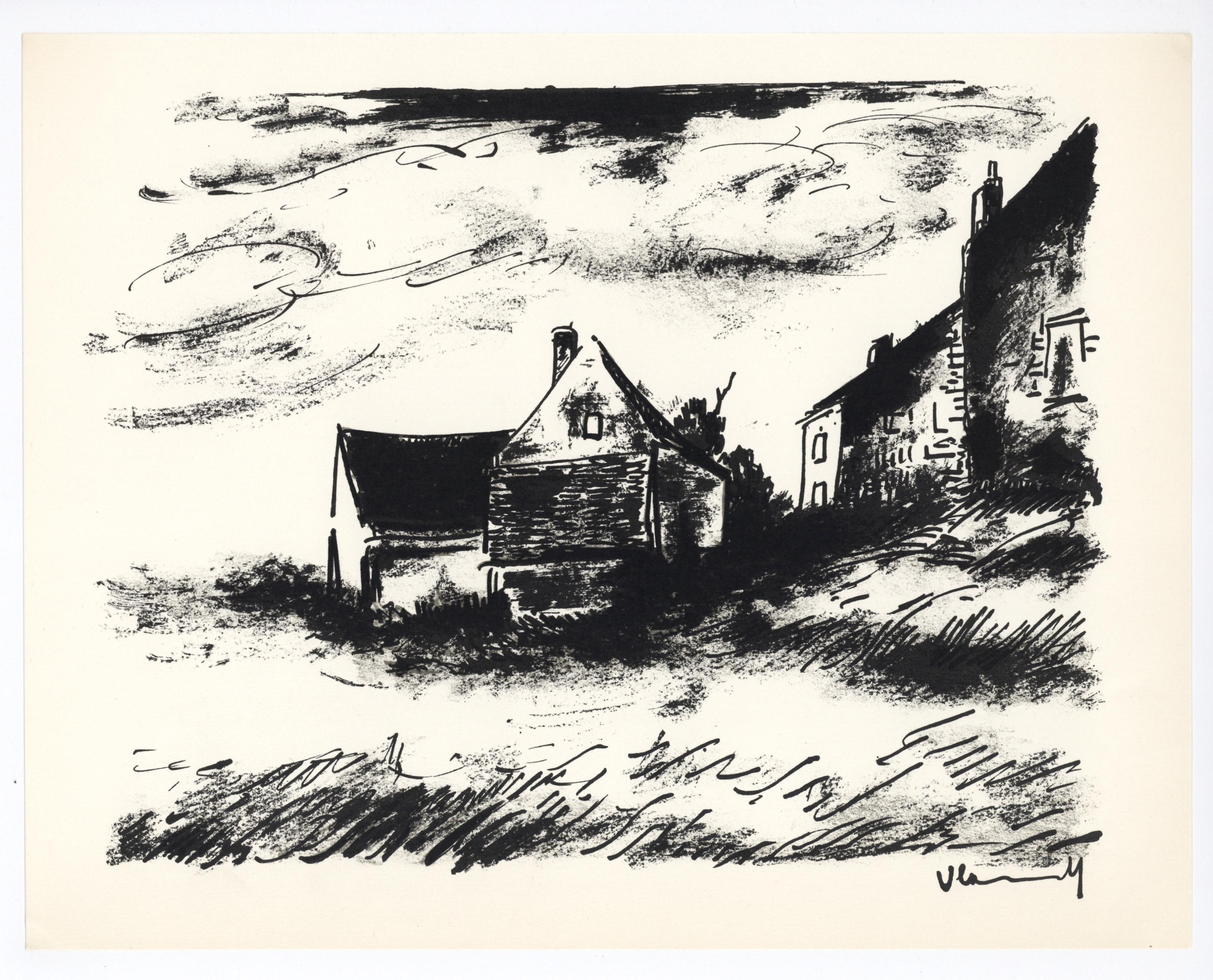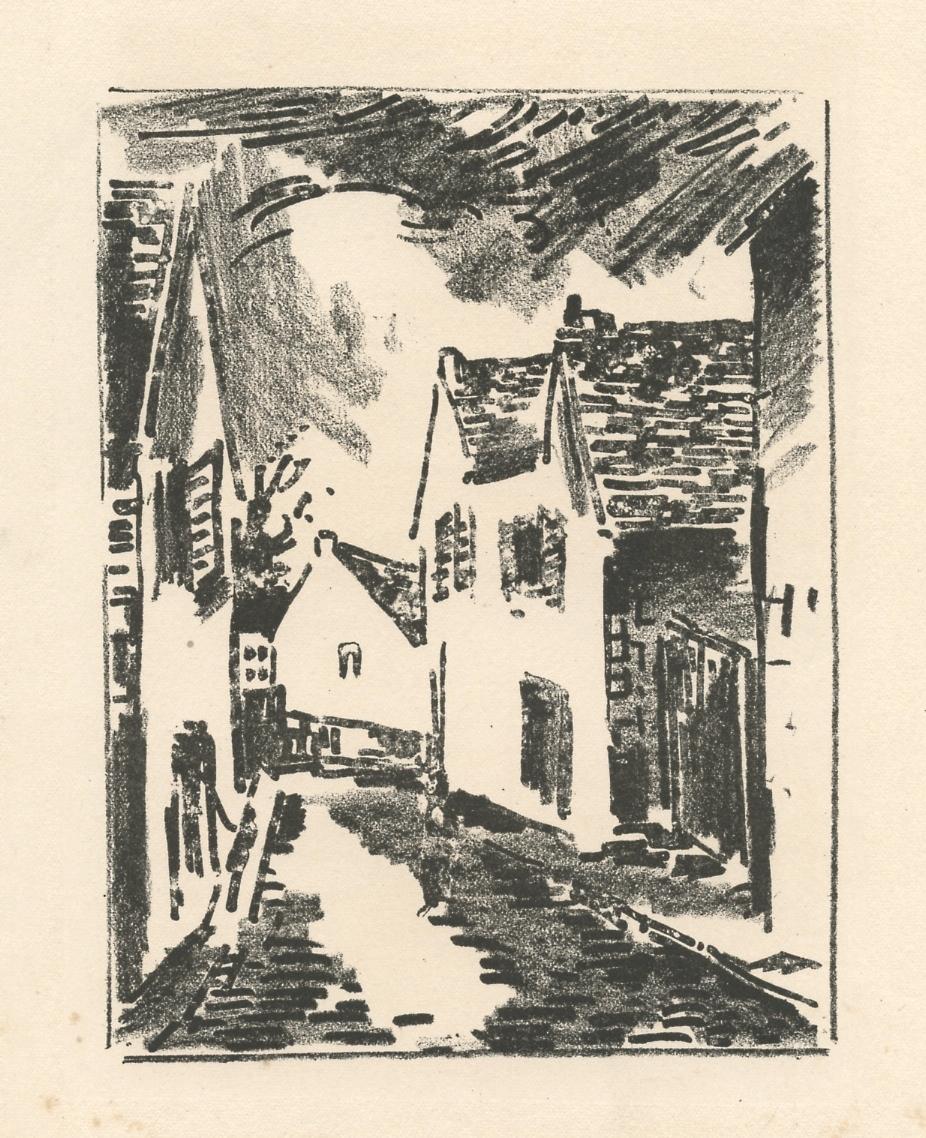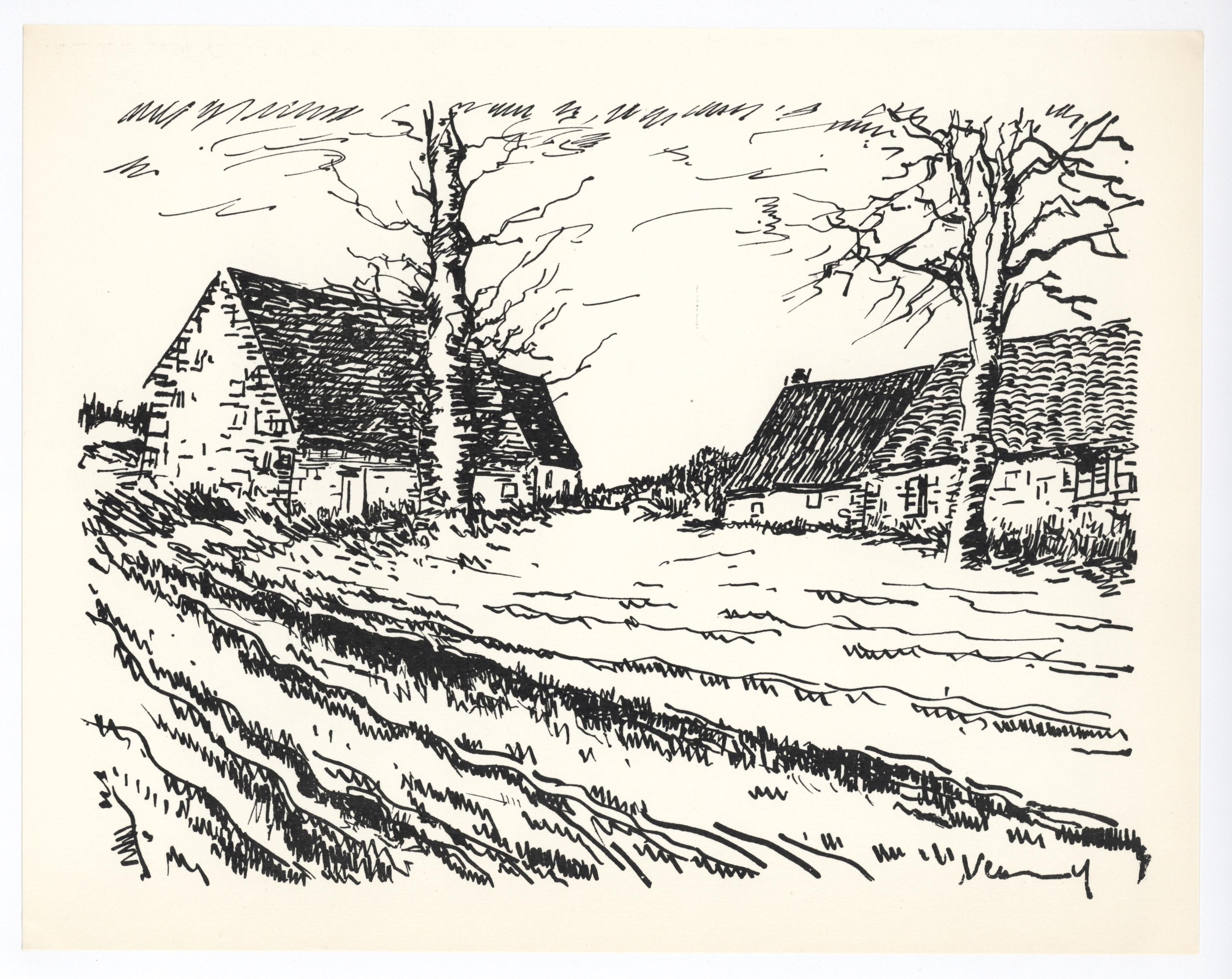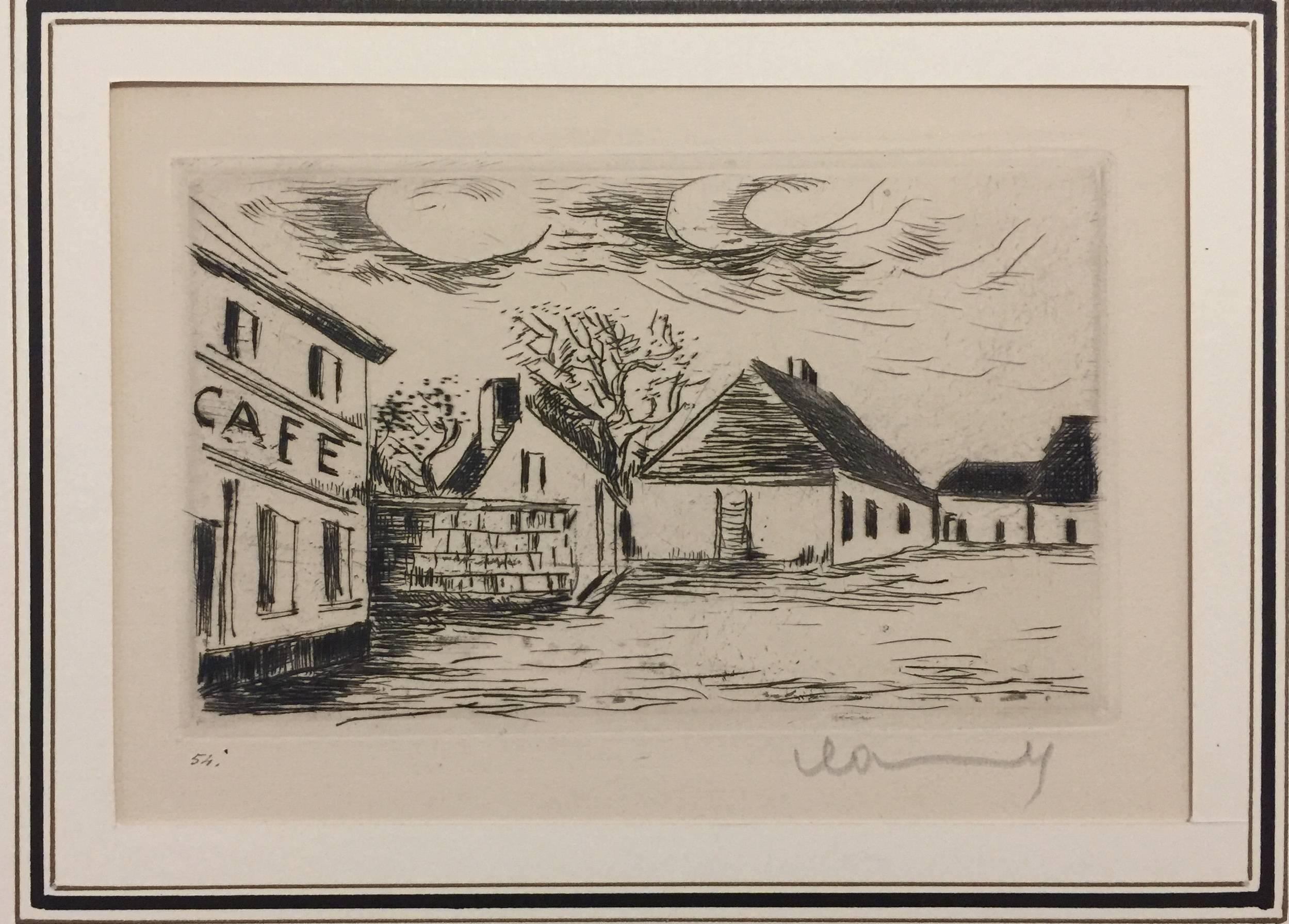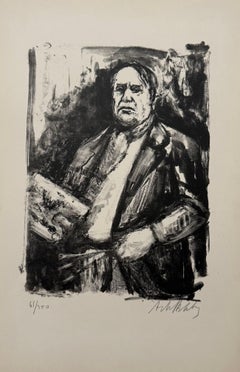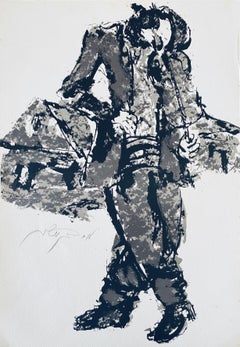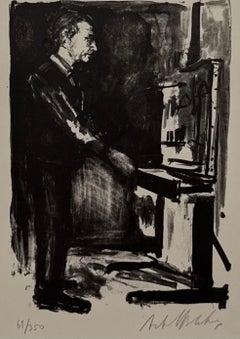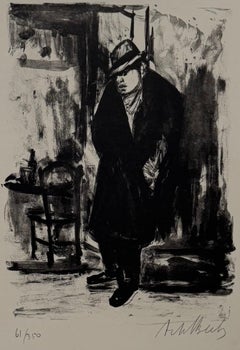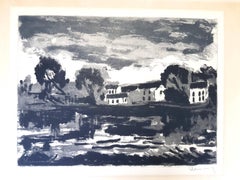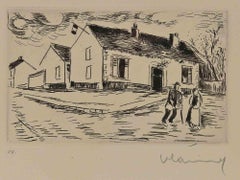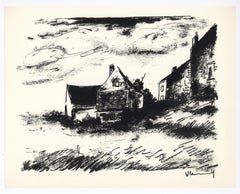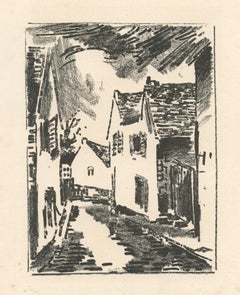Items Similar to Hand Signed in Pencil Etching Cafe de Paris Visage de Maisons Maurice Vlaminck
Want more images or videos?
Request additional images or videos from the seller
1 of 12
Maurice VlaminckHand Signed in Pencil Etching Cafe de Paris Visage de Maisons Maurice Vlaminckc.1927
c.1927
$950
£733.19
€834.70
CA$1,356.52
A$1,479.55
CHF 779.60
MX$17,743.72
NOK 9,816.10
SEK 9,158.22
DKK 6,233.72
About the Item
Maurice Vlaminck
Le Cafe de Paris, Pl. X, from Visage des Maisons, c. 1927 (Walterskirchen 132)
Etching on Van Gelder laid paper, signed in pencil, trial proof with the blindstamp of Frapier-Galerie des Peintures-Graveurs, Paris, with full margins, in good condition aside from matte and light staining, some tape staining on sheet verso edges, framed.
Dimensions 4 x 6 ½ in. (10.2 x 16.4 cm/plate). 13 x 19 in. (33 x 50.5 cm/sheet)
Maurice de Vlaminck ( 1876 - 1958) was a French painter. Along with Andre Derain and Henri Matisse, he is considered one of the principal figures in the Fauve movement, a group of modern artists who from 1904 to 1908 were united in their use of intense colour. Vlaminck was one of the Fauves at the controversial Salon d'Automne exhibition of 1905.
Maurice de Vlaminck was born on Rue Pierre Lescot in Paris. His father Edmond Julien was Flemish and taught violin and his mother Joséphine Caroline Grillet came from Lorraine and taught piano. His father taught him to play the violin. He began painting in his late teens. In 1893, he studied with a painter named Henri Rigalon on the Île de Chatou. In 1894 he married Suzanne Berly. The turning point in his life was a chance meeting on the train to Paris towards the end of his stint in the army. Vlaminck, then 23 and already active in anarchist circles in Paris, met an aspiring artist, André Derain, with whom he struck up a lifelong friendship. When Vlaminck completed his army service in 1900, the two rented a studio together, the Maison Levanneur, which now houses the Cneai, for a year before Derain left to do his own military service. In 1902 and 1903 he wrote several mildly pornographic novels illustrated by Derain. He painted during the day and earned his livelihood by giving violin lessons and performing with musical bands at night.
Vlaminck participated in the controversial 1905 Salon d'Automne exhibition. After viewing the boldly colored Fauvist canvases of Vlaminck, Henri Matisse, André Derain, Albert Marquet, Kees van Dongen, Charles Camoin, and Jean Puy, the art critic Louis Vauxcelles disparaged the painters as "fauves" (wild beasts), thus giving their movement the name by which it became known, Fauvism.
In 1911, Vlaminck traveled to London and painted by the Thames. In 1913, he painted again with Derain in Marseille and Martigues. In World War I he was stationed in Paris, and began writing poetry. Eventually he settled in Rueil-la-Gadelière, a small village south-west of Paris. He married his second wife, Berthe Combes, with whom he had two daughters. From 1925 he traveled throughout France, but continued to paint primarily along the Seine, near Paris. Resentful that Fauvism had been overtaken by Cubism as an art movement Vlaminck blamed Pablo Picasso "for dragging French painting into a wretched dead end and state of confusion". During the Second World War, Vlaminck visited Germany and on his return published a tirade against Picasso and Cubism in the periodical Comoedia in June 1942. Vlaminck wrote many autobiographies. For the next few years Vlaminck lived in or near Chatou (the inspiration for his painting houses at Chatou), painting and exhibiting alongside Derain, Henri Matisse, and other Fauvist painters. At this time his exuberant paint application and vibrant use of colour displayed the influence of Vincent van Gogh. Sur le zinc called to mind the work of Henri Toulouse-Lautrec and his portrayals of prostitutes and solitary drinkers, but does not attempt to probe the sitter's psychology—a break with the century-old European tradition of individualized portraiture.According to art critic Souren Melikian, it is "the impersonal cartoon of a type." In his landscape paintings, his approach was similar. He ignored the details, with the landscape becoming a vehicle through which he could express mood through violent colour and brushwork. The following year, he began to experiment with "deconstruction," turning the physical world into dabs and streaks of colour that convey a sense of motion.
Artistic influences
Vlaminck's compositions show familiarity with the Impressionists, several of whom had painted in the same area in the 1870s and 1880s. After visiting a Van Gogh exhibit, he declared that he "loved Van Gogh that day more than my own father". From 1908 his palette grew more monochromatic, and the predominant influence was that of Paul Cézanne. His later oil painting displayed a dark palette, punctuated by heavy strokes of contrasting white paint.
- Creator:
- Creation Year:c.1927
- Dimensions:Height: 18.5 in (46.99 cm)Width: 21.25 in (53.98 cm)
- Medium:
- Movement & Style:
- Period:
- Condition:in good condition aside from matte and light staining, some tape staining on sheet verso edges, framed. frame with light wear commensurate with age. Please see photos.
- Gallery Location:Surfside, FL
- Reference Number:1stDibs: LU38214658792
About the Seller
4.9
Platinum Seller
Premium sellers with a 4.7+ rating and 24-hour response times
Established in 1995
1stDibs seller since 2014
1,842 sales on 1stDibs
Typical response time: 1 hour
- ShippingRetrieving quote...Shipping from: Surfside, FL
- Return Policy
More From This Seller
View AllLithuanian French Artist Arbit Blatas Lithograph Maurice de Vlaminck Ecole Paris
By Arbit Blatas
Located in Surfside, FL
Arbit Blatas (1908 – 1999)
Hand signed and numbered to lower edge
Ecole de Paris Portrait
Printed on Arches French deckle edged art paper
1962
Arbit Blatas (1908 – 1999), born Nicol...
Category
1960s Expressionist Figurative Prints
Materials
Lithograph
Polish Israeli Artist Expressionist Hand Signed Lithograph
By Moshe Bernstein
Located in Surfside, FL
Born in Poland in 1920, Bernstein completed his art studies in the Academy of Vilna in 1939. His family was wiped out in the Holocaust, but he survived the war and lived in Russia un...
Category
Mid-20th Century Expressionist Prints and Multiples
Materials
Lithograph
Lithuanian French Artist Arbit Blatas Lithograph Maurice Utrillo Ecole D'Paris
By Arbit Blatas
Located in Surfside, FL
Arbit Blatas (1908 – 1999)
Hand signed and numbered to lower edge
Ecole de Paris Portrait
Printed on Arches French deckle edged art paper
1962
Arbit Blatas (1908 – 1999), born Nicol...
Category
1960s Expressionist Figurative Prints
Materials
Lithograph
Lithuanian French Artist Arbit Blatas Lithograph Chaim Soutine Ecole D'Paris
By Arbit Blatas
Located in Surfside, FL
Arbit Blatas (1908 – 1999)
Hand signed and numbered to lower edge
Ecole de Paris Portrait
Printed on Arches French deckle edged art paper
1962
Arbit Blatas (1908 – 1999), born Nicol...
Category
1960s Expressionist Figurative Prints
Materials
Lithograph
German Expressionist Woodcut Print Pencil Signed israeli Jerusalem Jacob Pins
By Jacob Pins
Located in Surfside, FL
Jacob Otto Pins (17 January 1917 – 4 December 2005) was a German-born Israeli woodcut artist and art collector, particularly of Japanese prints and paintings.
Jacob Pins was born in ...
Category
20th Century Expressionist Figurative Prints
Materials
Woodcut
Polish Israeli Artist Expressionist Hand Signed Lithograph
By Moshe Bernstein
Located in Surfside, FL
Born in Poland in 1920, Bernstein completed his art studies in the Academy of Vilna in 1939. His family was wiped out in the Holocaust, but he survived the war and lived in Russia un...
Category
Mid-20th Century Expressionist Prints and Multiples
Materials
Lithograph
You May Also Like
Maurice de Vlaminck - Original Handsigned Etching
By Maurice de Vlaminck
Located in Collonge Bellerive, Geneve, CH
Maurice de Vlaminck - Original Handsigned Etching
Title: L'Oise à Cergy
Reference: Catalogue raisonné Walterskirchen, n°110.
Original etching, hand-signed in pencil by the artist ; ...
Category
1920s Modern Landscape Prints
Materials
Etching
Village - Etching by M. de Vlaminck - 1950
By Maurice de Vlaminck
Located in Roma, IT
Village is a modern artwork realized by Maurice de Vlaminck in 1950.
Black and white etching.
Hand signed and dated on the lower margin.
Edition of 100 specimen as reported on th...
Category
1950s Post-Impressionist Landscape Prints
Materials
Etching
"Potiniere at Rueil" original lithograph
By Maurice de Vlaminck
Located in Henderson, NV
Medium: original lithograph. Printed in Paris in 1958 at the Mourlot atelier, and published by Andre Sauret in an edition of 2000. Size: 9 1/2 x 12 1/4 inches (242 x 310 mm). Signed ...
Category
1950s Landscape Prints
Materials
Lithograph
original lithograph
By Maurice de Vlaminck
Located in Henderson, NV
Medium: original lithograph. Printed in Paris in 1921 on Lafuma-Navarre wove paper, and issued in a limited edition of 300 for Georges Duhamel's "Trois journees de la tribu". Size: t...
Category
1920s Prints and Multiples
Materials
Lithograph
"Les Challonges" original lithograph
By Maurice de Vlaminck
Located in Henderson, NV
Medium: original lithograph. Printed in Paris in 1958 at the Mourlot atelier, and published by Andre Sauret in an edition of 2000. Size: 9 1/2 x 12 1/4 inches (242 x 310 mm). Signed ...
Category
1950s Landscape Prints
Materials
Lithograph
Cafè de Paris
By Maurice de Vlaminck
Located in Roma, IT
Original drypoint and etching. Hand signed. From the suite: "Visage de Maisons".
Image Dimensions : 17 x 11 cm
This artwork is shipped from Italy. Under existing legislation, any a...
Category
1920s Post-Impressionist Landscape Prints
Materials
Etching
More Ways To Browse
Antique Violins
Andy Warhol Brooklyn Bridge
Ann Reeves
Antony Gormley Horizon Field
Arthur John Strutt
Bill Ogden
Bob Dylan Train Tracks
Brooklyn Bridge Warhol
Buell Whitehead
Calder Soleil
California Wine Posters
Cannes Vintage Travel Poster
Charles Wysocki
Childe Hassam On Sale
Currier Ives New York
Dali Espana
Dali Normandy
Damien Hirst Politeness
